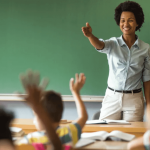Active listening
Do you listen to or only hear what the students say?
Do you listen to or only hear what the students say?
Active listening
Do you listen to or only hear what the students say?
In the field od education we often hear the phrase „active listening”. But what does this actually mean? How can we put it into practice? How can we actively listen to a student? What results can be expected?
Active listening can be defined as an assertive type of communication technique, based on acceptance and empathy. It is useful not only to improve the ability to express one’s emotions or arguments correctly and effectively, but it also helps to listen and to better understand the reasons and feelings of others, establishing that authentic connection that can become the basis for a fruitful and effective relationship. Active listening means “connecting” to each other, capturing every aspect of the message, tone of voice, hesitations and emotions.
Active listening encourages discussions in class and students to learn new things, helps children and young people to become more independent and to do something because they want to. It also creates an environment where they feel safe and protected as well as free and involved. It generates a high degree of trust in the teacher-student and student-student relations.
Let’s remember that we teachers often become in the eyes of our students super heroes even if it is not intentional. We are all aware that students learn by imitating and observing one’s behavior rather than listening to the lesson. This means that the more we become such teachers capable of using active listening, the more we will be able to listen to each other in a careful and effective way.
The most common mistakes we make:
It is time to listen actively to students!
Discover how we can collaborate, other tools and how to work together in the future!

